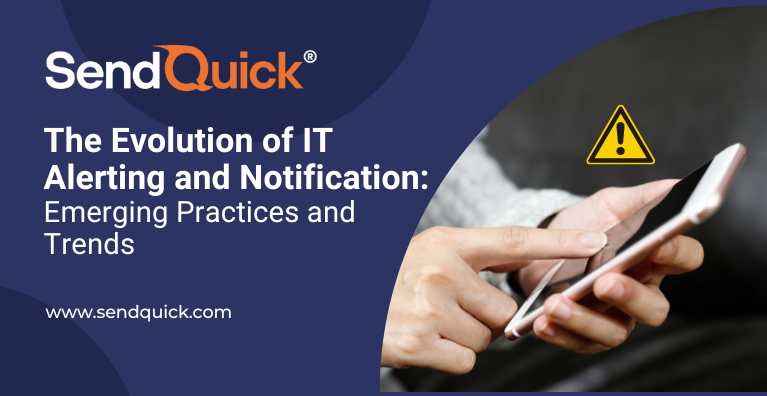The field of IT alerting and notification has evolved dramatically over the years, reflecting the rapid advancement of technology and changing business requirements.
Today, effective IT alerting and notification is a critical part of any IT infrastructure, helping organizations ensure their systems are functioning optimally and responding quickly to any issues. Here, we will explore the evolution of IT alerting and notification, emerging trends and best practices.
In the early days of IT, alerting and notification was a manual process. IT administrators would manually check systems and send alerts via email or pager if any issues were detected. This was a time-consuming process that was prone to errors and missed alerts.
As technology evolved, so did IT alerting and notification. With the advent of networked computing and the rise of virtualization, IT administrators began to use more sophisticated tools to automate the manual processes and improve the speed and accuracy of alerting.
Today, IT alerting and notification has become a critical part of IT infrastructure, with modern tools offering real-time monitoring, automatic alerting, and sophisticated analysis of system and application data.
Artificial Intelligence (AI) and Machine Learning (ML): One of the biggest emerging trends in IT alerting and notification is the use of AI and ML. These technologies allow IT systems to learn from data and make predictions about future performance, enabling IT administrators to receive alerts before issues become critical.
Cloud Monitoring: Another trend is the increasing use of cloud-based alerting and notification solutions, as provided by SendQuick Cloud. These solutions offer the benefits of lower costs and greater scalability compared to on-premise solutions, as well as the ability to monitor multiple cloud environments.
Omnichannel Notifications: Omnichannel notifications are becoming increasingly important in the field of IT monitoring and alerting, allowing key IT personnel to receive notifications via multiple channels such as email, SMS, popular social messaging channels like Whatsapp, Facebook Messenger, Telegram, LINE, and collaboration tools like Microsoft Teams and Slack. Omnichannel notifications enable the key staff to receive alerts and respond quickly and effectively to potential threats, regardless of their location or device.
To make the most of the latest IT alerting and notification tools and technologies, it is important to follow best practices, including:
Defining clear goals: Determine what you want to monitor and what you hope to achieve with your alerting and notification solution. This will help you to choose the right tools and configure them in the most effective way.
Using centralized notification: Centralize your notification to provide a unified view of your IT infrastructure. This makes it easier to identify issues and trends, and to respond quickly to alerts.
Automating wherever possible: Automating routine tasks such as alerting, reporting, and data collection can help reduce manual labor and improve accuracy.
Monitoring the right things: Focus on monitoring the systems and applications that are most critical to your business. This will help you to prioritize alerts and ensure that the most important issues are addressed first.
Continuously improve: Regularly review and improve your alerting and notification solution to ensure it remains effective. This may involve adding new features, integrating with other tools, or making changes to your infrastructure.
In conclusion, the evolution of IT alerting and notification has come a long way, and today’s solutions are more sophisticated and capable than ever before. With the right tools and best practices in place, organizations can gain a complete view of their IT infrastructure, minimize downtime, and ensure their systems are functioning optimally.
Check out SendQuick’s comprehensive IT alert notification platform. Our alert management system comes with an escalation feature that escalates alert messages to the superior of a given recipient should they fail to reply after a set amount of time.
More than just a traditional SMS gateway provider, SendQuick is a leading enterprise mobile messaging solutions provider headquartered in Singapore. To learn more about our notification management solutions and other products, such as our email to SMS gateway, visit our solutions page today or contact us to speak with a SendQuick expert for more details.






